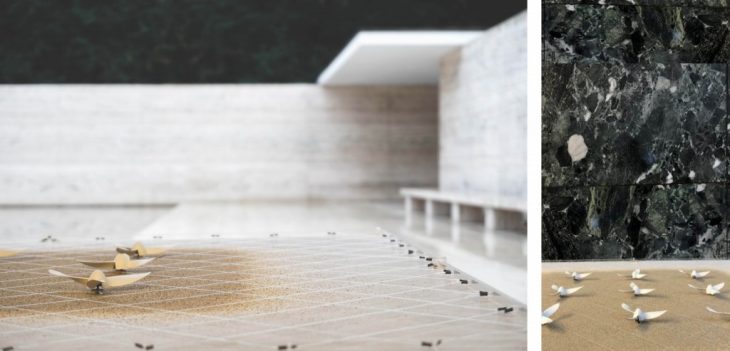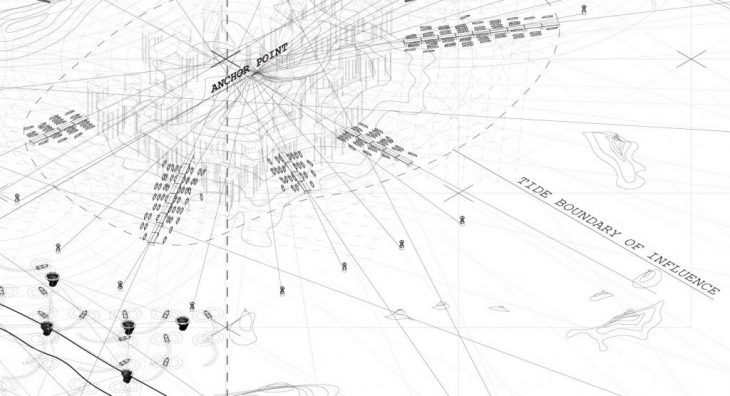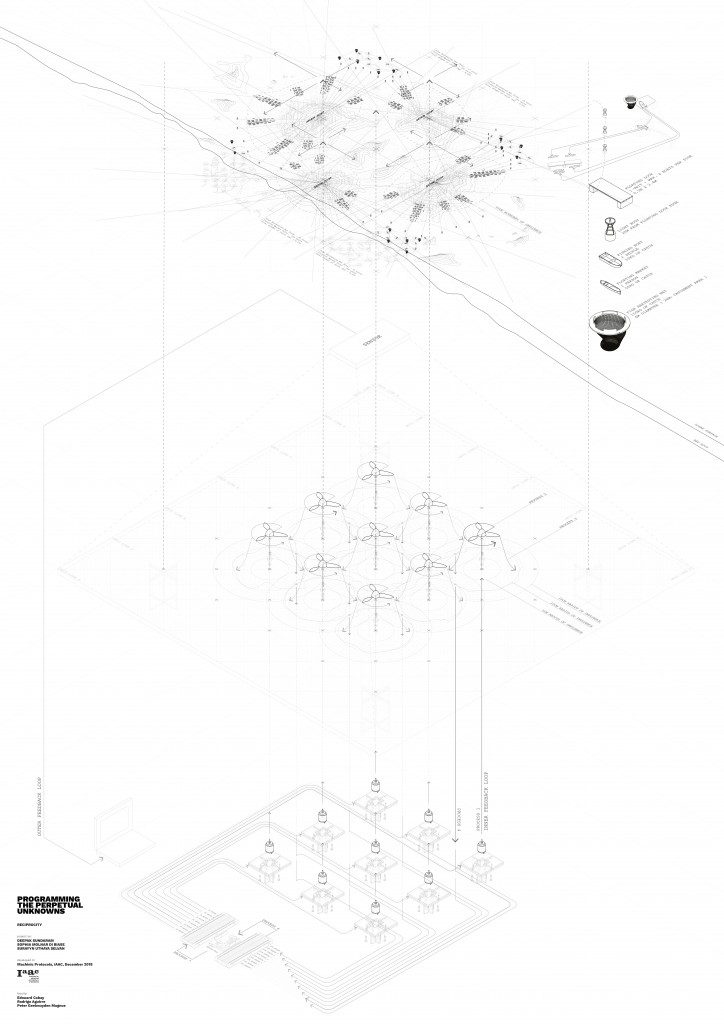RECIPROCITY: An Architectural Fiction
Programming the Perpetual Unknowns: A Sand Automated Machine
How can we define a non-intrusive and self-sustaining human and fauna ecosystem in a water dense environment?

Civilizations thrive on coast lines and riversides by taking advantage of drinking water, fishing, and irrigation. Throughout our study, we challenge the necessity of land for a well-functioning community structure and propose an environment in which floating villages are self sustaining with direct connection to their aquatic resources.
Through a carefully controlled system of large scale fish farming, these bedrock anchored floating villages are continuously self supporting; boats retrieve fish from surrounding fish farms that are then sold at floating markets for the local inhabitants to consume. The confluence of tides defines the transition between the occupiable radius of the human society and the harvesting and circulation area of fishing boats as fish are drawn to these specific concentrations of nutrient rich water. This society maintains a mobile strategy of resettlement to prevent overpopulation and overfishing. To delineate, the semi-permanence of these civilizations allows for flexibility and adaptation; the floating communities reposition over the years as the sea is ever-changing and fluctuating in sea level. This continuous feedback loop of water and civilizations adapting to one another results in systematic reciprocity of energy and resources.

We approached this large scale architectural plan by first exploring the relationship between sand and fans. After carefully analyzing the patterns, we pinpointed the architectural theme of adaptable floating villages. We arrived at this architectural fiction by gaining inspiration from the sand’s water-like qualities of movement. The details of bedrock anchored villages at the center of the fans as well as the tide boundary of influence at the change between sand and blank canvas correlates the abstract sand machine with our proposed aquatic ecosystem.

Domain: Scale: 120 m x 120 m Period: 5 years
Project variables:
- Fishing Boat ( 2 persons + 50 kg of catch )
- Fish Harvesting Net ( 150 kg of catch, 6 m diameter, 28 m2 catchment area, 56 m2 circulation area )
- Floating Market ( 1 person + 25 kg of catch )
- Light Buoy ( 20 m from edge of a group of floating docks )
- Floating Docks ( 1 unit = max 4 floating markets per side / max 1 fishing boat per side,6.5 m length x 2.4 m width )
Protocol:
- For every 28 m 2 of settlement area, a dock is formed, populating the perimeter.
- If 1 dock is formed, 14 floating markets are docked.
- Light buoys are placed at an offset of 20 m per dock to form a boundary.
- 1 unit of fish harvesting net populates outside the boundary for every 5 m2 of settlement area.
- When 1 unit of fish harvesting net populates, 3 fishing boats populate.

Determining the limits and capabilities of this self-sustaining living environment defines our objective.
A slight change in anchor point changes and defines a village.
A change in our perspective leads to alternate solutions.
</p>
Introductory Studio – Machinic Protocols